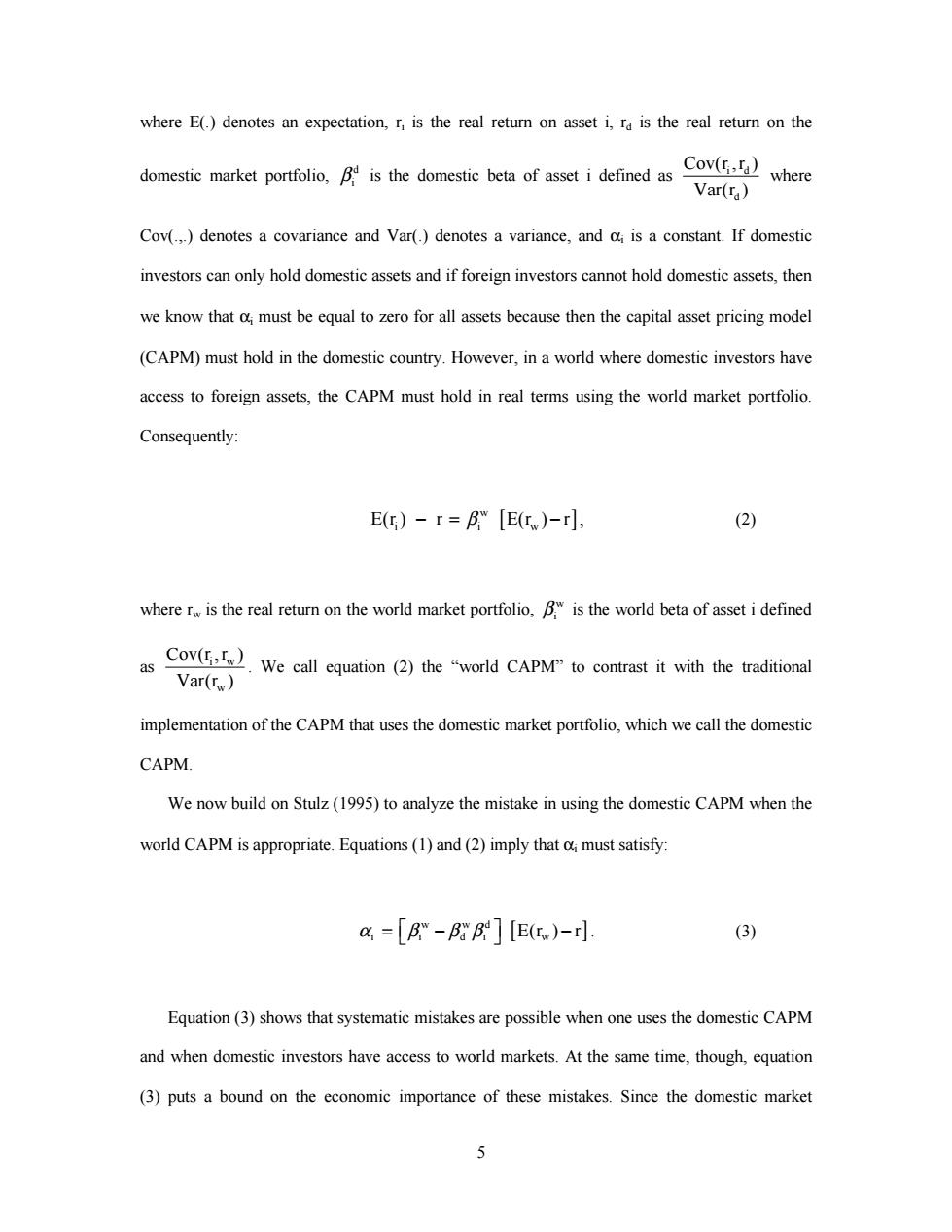正在加载图片...

where E(.)denotes an expectation,ri is the real return on asset i,ra is the real return on the domestic market portfolio,Ba is the domestic beta of asset i defined as Cov(r a)where Var(ra) Cov(.,)denotes a covariance and Var(.)denotes a variance,and o is a constant.If domestic investors can only hold domestic assets and if foreign investors cannot hold domestic assets,then we know that o must be equal to zero for all assets because then the capital asset pricing model (CAPM)must hold in the domestic country.However,in a world where domestic investors have access to foreign assets,the CAPM must hold in real terms using the world market portfolio. Consequently: E(c)-r=B"[E(w)-r], (2) where rw is the real return on the world market portfolio,B is the world beta of asset i defined as CovWe call qution (2)the"world CAPMto conrast it with the traditional Var(r) implementation of the CAPM that uses the domestic market portfolio,which we call the domestic CAPM. We now build on Stulz(1995)to analyze the mistake in using the domestic CAPM when the world CAPM is appropriate.Equations(1)and(2)imply that oi must satisfy: &=[B-Ba][E(w)-r] (3) Equation(3)shows that systematic mistakes are possible when one uses the domestic CAPM and when domestic investors have access to world markets.At the same time,though,equation (3)puts a bound on the economic importance of these mistakes.Since the domestic market 55 where E(.) denotes an expectation, ri is the real return on asset i, rd is the real return on the domestic market portfolio, d βi is the domestic beta of asset i defined as i d d Cov(r ,r ) Var(r ) where Cov(.,.) denotes a covariance and Var(.) denotes a variance, and αi is a constant. If domestic investors can only hold domestic assets and if foreign investors cannot hold domestic assets, then we know that αi must be equal to zero for all assets because then the capital asset pricing model (CAPM) must hold in the domestic country. However, in a world where domestic investors have access to foreign assets, the CAPM must hold in real terms using the world market portfolio. Consequently: [ ] w E(r ) r E(r ) r i iw −= − β , (2) where rw is the real return on the world market portfolio, w βi is the world beta of asset i defined as i w w Cov(r , r ) Var(r ) . We call equation (2) the “world CAPM” to contrast it with the traditional implementation of the CAPM that uses the domestic market portfolio, which we call the domestic CAPM. We now build on Stulz (1995) to analyze the mistake in using the domestic CAPM when the world CAPM is appropriate. Equations (1) and (2) imply that αi must satisfy: [ ] w wd α β ββ i i di w =− − E(r ) r . (3) Equation (3) shows that systematic mistakes are possible when one uses the domestic CAPM and when domestic investors have access to world markets. At the same time, though, equation (3) puts a bound on the economic importance of these mistakes. Since the domestic market